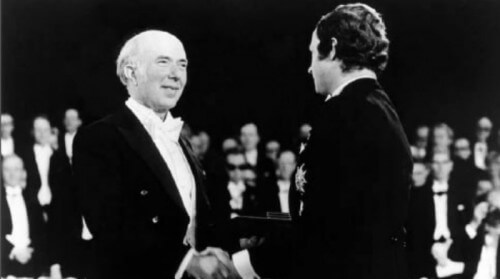100 years since the birth of the Italian scientist Renato Dolbeco

Renato Dulbecco, one of the greatest researchers of viruses and cancer, in the 20th century was born in the province of Calabria in southern Italy, 100 years ago (February 22.2.1914, 16). At the age of 22, he had already graduated from high school, and excelled in mathematics and exact sciences. In the end, he chose to study medicine. At the age of XNUMX, he had already completed medical studies at the University of Turin, but he enjoyed the biological research he did in the laboratory of the professor of anatomy and histology, Giuseppe Levy, more. There, Dulavko met two students who would later become his close friends: Rita Levi Montalcini and Salvador Luria, both of whom would later win the Nobel Prize in Medicine.
From the underground to the USA
After his studies, Dulavko was drafted into the army. Two years later he was released and returned to research with Levy, but with the outbreak of World War II he was recruited again, was wounded on the Russian front and was discharged from the army. After the fall of Mussolini's regime, he joined the underground that worked against the Nazis, and was mainly involved in its political activities. At the same time, he returned to his research work, and even studied advanced courses in physics. After the war Levi-Montalcini urged him to go work in the USA, as she herself was about to do, and in 1947 they crossed the Atlantic Ocean together. Dolbko joined his former colleague, Luria, in a small laboratory in Indiana, where he used his knowledge of physics to study the effect of light on bacteria-attacking viruses (bacteriophages). Shortly after, he was offered a research position at the California Institute of Technology (CalTech), where he continued his research on bacteriophages. In the 50s, the institute received a large donation to fund research into disease-causing viruses, and Dulbecco turned to this field. Thanks to his medical experience, he developed a method to grow viruses and study them using cell cultures, and his successes in the field led to his promotion to the rank of professor. In the late 50s, following his student, Howard Temin, he entered a new field: cancer-causing viruses.
Cancer and AIDS
In 1911, the American researcher Peyton Ross (Rous) discovered that injecting a certain virus into poultry causes the appearance of cancerous tumors in the chicken. The discovery was abandoned for many years, but with the development of new genetic tools after the DNA structure was deciphered, the scientific interest in cancer genetics reawakened more strongly. Dolbko and his students began to delve into the field, trying to understand how the virus causes the genetic change that causes the loss of control over cell division. In 1962, Dolbko left Cal-Tech and joined a research institute in California founded by Jonah Salk, the developer of the polio vaccine. There he started researching viruses that were suspected of causing cancer in humans, including the Polymavirus and SV-40.
Like all living things, viruses make proteins based on genetic information. The information is stored in DNA, and when the cell needs a certain protein, it copies a segment of the DNA into a short copy of a similar substance, RNA, and produces the protein based on it. In 1970, two of Dulbek's former students, Tamin (mentioned earlier) and David Baltimore (Baltimore) discovered a surprising find. Both were separately isolated in viruses, an enzyme that does the opposite, producing DNA based on the information stored in RNA. This enzyme is called reverse transcriptase, and the viruses it contains were called retroviruses, because the genetic process in them is the opposite of what is customary. Although Dolbko himself was not directly involved in the revolutionary discovery, it was inspired by the methods he developed in his laboratory, and the Nobel Prize in Medicine was awarded to all three of them together in 1975. The enormous importance of retroviruses became clear a few years later, with the discovery that they cause other diseases, primarily AIDS. The discoveries of Temin, Baltimore and Dulbecco laid the foundation for the development of drugs to treat the disease.
Epilogue
Even after the award, Dolbko continued scientific research and was extensively involved in the study of the biological mechanisms of breast cancer. In 1986 he was one of the co-researchers in launching the project to decode the human genome. In the 90s he returned to Italy for a few years, where he served as president of the National Research Council. In 1997 he moved to California, and continued to research breast cancer at the Salk Institute, almost until his last day. In 2012 he passed away, a few days before his 98th birthday. During the entire period of his scientific work, Dulavko served as a mentor and guide to a long line of students and researchers, and many of his students also won Nobel Prizes.
Related links:

2 תגובות
In Hebrew bacteriophages, you don't need a dash (c)
Jonah Salk decided to found a research institute. It seems that the only one who did this in Israel was the first president. Perhaps Mr. Dan Schechtman wants to build such an institution. After all, the award has an academic center. So, a Nobel laureate and a president.